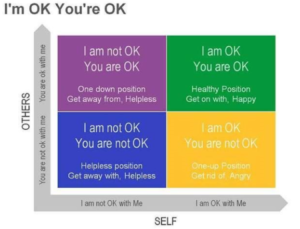Communication skills are often cited as one of the most sought-after skills in the corporate world. In fact, research by McKinsey about the future of work has listed communication skills in the list of top 13 skill groups expected to be in demand in the future and the ‘ability to synthesize messages’ as one of the biggest predictors of employment. Studies also show that improved communication skills enhance employees’ chances of advancing in their careers.
So, with all this buzz about communication skills? What are communication skills exactly? And how can you use them to press the fast forward button on your career?

What are Communication Skills?
As the name implies, communication skills are the skills required to exchange verbal and non-verbal messages between one or more parties. One party? Yes, we’ll get to that later.
The messages exchanged in the communication process could range from simple, direct, factual information to complex, emotionally-laden exchanges. By all accounts, communication is a two-way street. It involves listening, speaking, showing understanding, and expressing empathy.
The Two Types of Communication
One of the biggest mistakes that professionals make when they try to improve their communication skills is that they jump to improving their interpersonal communication. However, true and effective communication starts from within. There are two types of communication that are important to develop in order to build relations effectively with others.
- Intrapersonal Communication: This involves one’s ability to identify one’s emotions and contradicting thoughts, question them, and discuss them with one’s self.
- Interpersonal Communication: This involves one’s ability to communicate one’s emotions and thoughts with others while understanding and empathizing with others’ emotions and thoughts.
It is critical to understand that effective intrapersonal communication is the road to effective interpersonal communication. You cannot have one without the other.
Now that you know about the two types of communication, you may be wondering what this has to do with career advancement and progress. In the next section, we’ll tell you the connection between the two types of communication and your leadership potential and that of your employees.
The Two Types of Communication in Action

The above model proposed by Thomas Harris M.D. in 1967 remains to date one of the best models describing the interplay between both types of communication in the workplace and personal life. Every quadrant in this model describes one position that an individual takes in life as a result of communicating with their selves and others. According to Harris, one’s position in the model inevitably dictates their behavior and their leadership potential.
The Four Positions:
- I’m not OK, You’re OK: In this position, the individual communicates to one’s self a sense of insufficiency and low self-esteem, whilst putting others on a pedestal. This results in a breakdown in communication resulting from a lack of openness to express one’s self to others, depriving the entire group of one’s intellectual contribution.
- I’m OK, You’re Not OK: In this position, employees drive others away by a heightened sense of self and an overmagnification of their own egos in comparison to others. Although individuals with this position may or may not have justifications for their high self-esteem, yet looking down upon the thoughts and emotions of others leads to the alienation of team members and an overall decline in the collective intelligence of teams.
- I’m Not OK, You’re NOT OK: In this position, employees fail to appreciate themselves and others leading to low morale and demotivation across the entire team. Employees in these positions communicate a lack of purpose and continuous doubts about a team’s ability to succeed.
- I’m OK, You’re OK: In this position, the individual communicates confidence and trust in one’s skills and others’, thereby, leveraging the collective intelligence of the group, creating high team morale, and motivating the entire team to have all hands on deck.

How to Communicate Like a Leader
After being introduced to the four types of communication resulting from the interplay between intrapersonal and interpersonal communication, you might have already deduced the common position that leaders usually have. Yes, it’s ‘I’m OK, You’re OK’!
People with leadership skills tend to communicate confidence in their selves and others. They are more understanding of their own mistakes and others’ too, which renders them more forgiving and willing to accept mistakes as opportunities for learning rather than judgment. They are overall more pleasant and motivating to work with, continuously challenging others to share their opinions and sharing feedback openly and nicely.
Develop Your Leadership Potential
So, if you want to push forward your career in the right direction, start by exploring what you are communicating to yourself first. When that’s OK, work on developing what you’re communicating to others. If you’re interested in knowing more about the effect of communication on organizations, how to improve organizational communication, and boost company performance accordingly, register to attend our XpertTalk on just this topic here.

